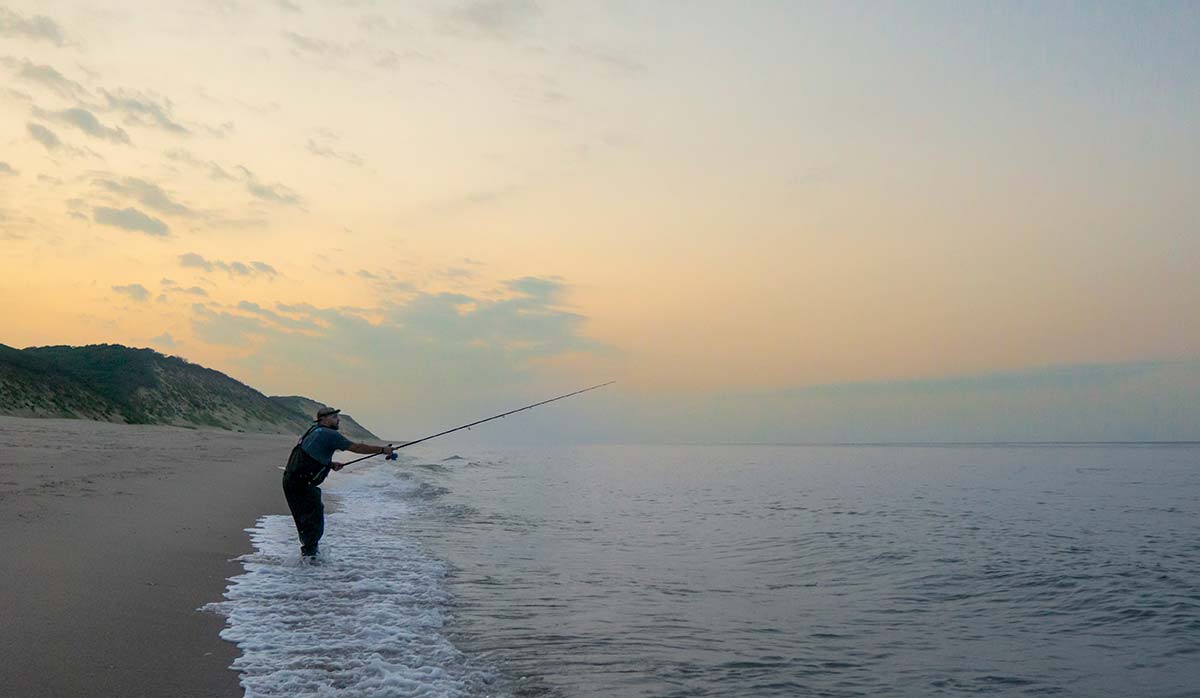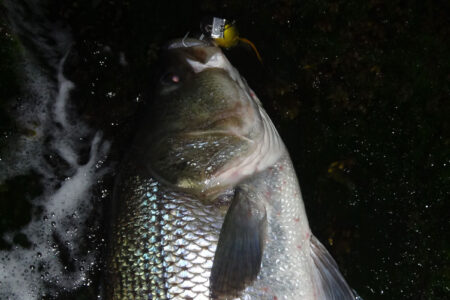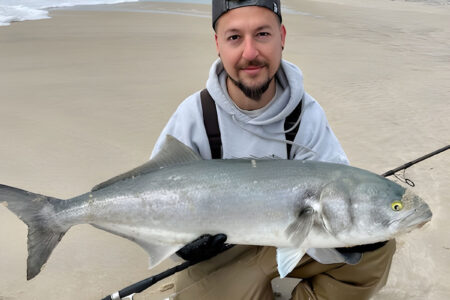
Conventional wisdom doesn’t always pan out in the surf, especially when it comes to leader choice.
Let me pose a question to you, the reader: when it comes to striper leaders, thinner is always better, right? For example, if one brand of leader is 0.60mm and rated to 50 pounds, and another is 0.90mm and rated to 50 pounds, it’s obvious that the first line is a better, higher quality line, correct? Even if the first one is a little more expensive, it’s got to be worth it because it’ll tie better knots and be less visible to the fish, or that’s the assumption.
Unfortunately, I hear this a lot, and I’ve got bad news for all you surf guys who have made this mistake, buying the “better” line, might actually be costing you fish.
First, let’s discuss line-test rating. The number on the box is often hardly (if ever) the entire story. First, there is no independent testing organization reviewing these lines (to my knowledge). Next, the number on the box or spool is a static rating that does not account for shock, flex, or abrasion. The rating is typically measured using a mechanical device that slowly and evenly applies force to the line until it breaks. Have you ever landed a fish that slowly and evenly applied force to the line?
This means there is some bias to the number; a thin, hard, stretch-free line may technically be as strong as a soft, thick, stretchy line, but on the water the thinner and stiffer line may end up acting like a much lower-rated line, it just won’t handle hard hook-sets and dramatic changes in direction by powerful fish the same.
Even more to the point, a thin line is going to have a lot less abrasion resistance than a thicker line, all other things being equal. Abrasion resistance is everything in the striper surf, it’s really the single most important factor anywhere other than just open sandy beach, and even there, I’d argue abrasion resistance is an asset. Frankly, I’d rather have a tougher, abrasion resistant line than just about anything else. The visibility, handling, memory and even stretch of the line are just so much less important than abrasion resistance.
When it comes to abrasion resistance, the thicker the line ultimately the better its performance. There really isn’t any other way around it. Yes, some lines are better made than others, some will only nick or burr, while others will simply cut, at the same diameter. High quality materials and workmanship definitely matter, there’s no argument there from me, but they’ll only take you so far. When you’re comparing two brands of high to “ultra” quality monofilament (or fluoro), there really isn’t a replacement for diameter.
For example, Trilene Big Game is a great, very stretchy line that – while not premium – stands up well in the surf as a leader. However, when fishing 50-pound Big Game side-by-side with 50-pound Trikfish Armor Tough, I can tell you the Big Game doesn’t have nearly the same abrasion resistance. On the package, Trikfish claims it’s 0.75 mm thick, while Big Game is 0.71 mm. In the hand, the Trikfish feels much thicker, and a micrometer supports this observation; by my measurements it’s at least 20% thicker. That helps explain why the Trikfish is just so darn tough, and one of my favorite leaders: it’s seriously thick!
This also applies to comparing lines like the new Seaguar Inshore and Seaguar Premium. While they may both be rated to the same test, 30-pound Inshore is thicker than Premium. In my testing, Blue is a much better all-around striper and tarpon leader as it will withstand so much more abuse, while the premium is probably the best choice for albies, for example. So when it comes to choosing leader material in the surf, don’t skimp on the thickness. While it may be a negative in freshwater or as a saltwater running line, a thick leader can actually be an asset for striper surf fishing.
In closing, I want to make it clear I’m not discounting workmanship or materials. I’ll take a high-quality, consistently built line that is slightly thinner than super thick department store brand any day. But, for the surf, I’ll also probably pass on the latest, thinnest (and typically most expensive) line as well. Case in point, this year I tried out a new fluorocarbon that was incredibly thin. At first I was very, very happy with the results, I was able to out fish some eel fishermen after being defeated by them repeatedly night after night. Disturbingly, I can make no other conclusion than it was because of changing my leader. It worked so well I was genuinely upset! What had I been missing all these years by not using an ultra-thin fluoro leader?
But then, over the next couple months, I lost several decent to large fish under conditions and in places I never should have had any trouble…the leader just kept breaking. In fact, one night I set the hook on what felt like a heavy fish, the fish turned, shook its head twice, and just the action of the head shake snapped the leader at the knot! That was a first for me. In the end, while I landed three nice fish on the thinner leader, I lost at least twice, if not three-times that many because of that same line. You won’t find me trying it out again in 2023, I’ll stick to the thick stuff!



